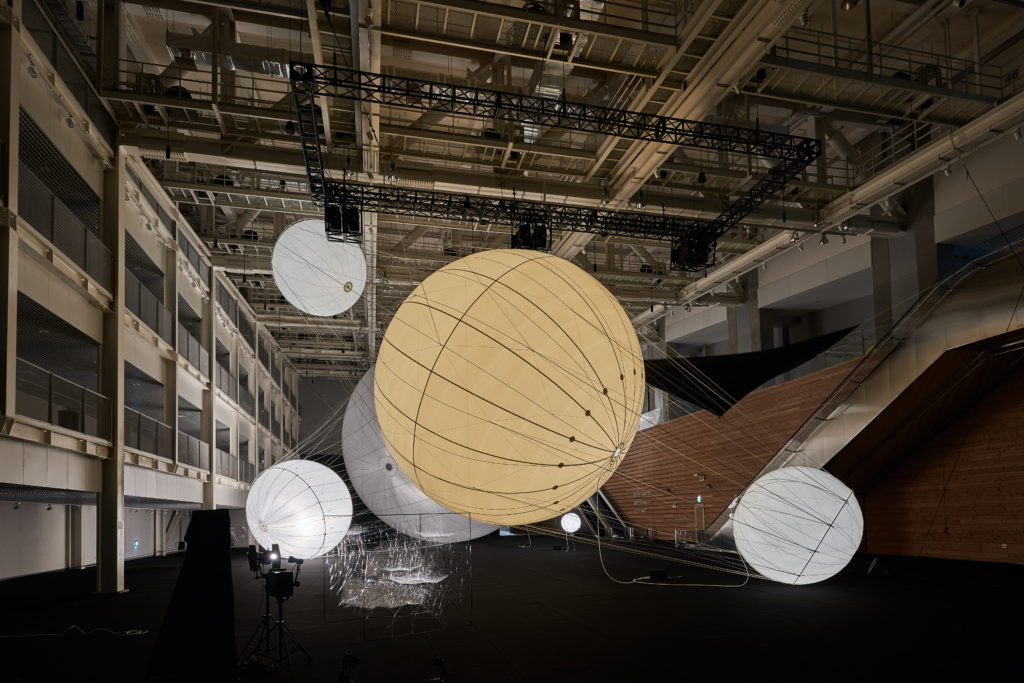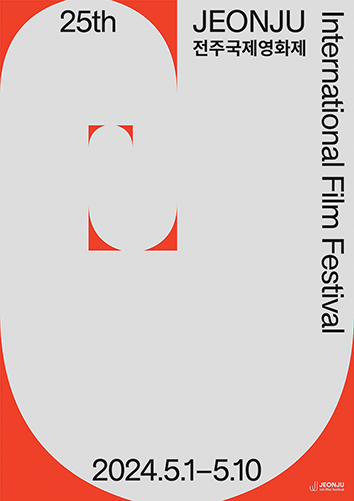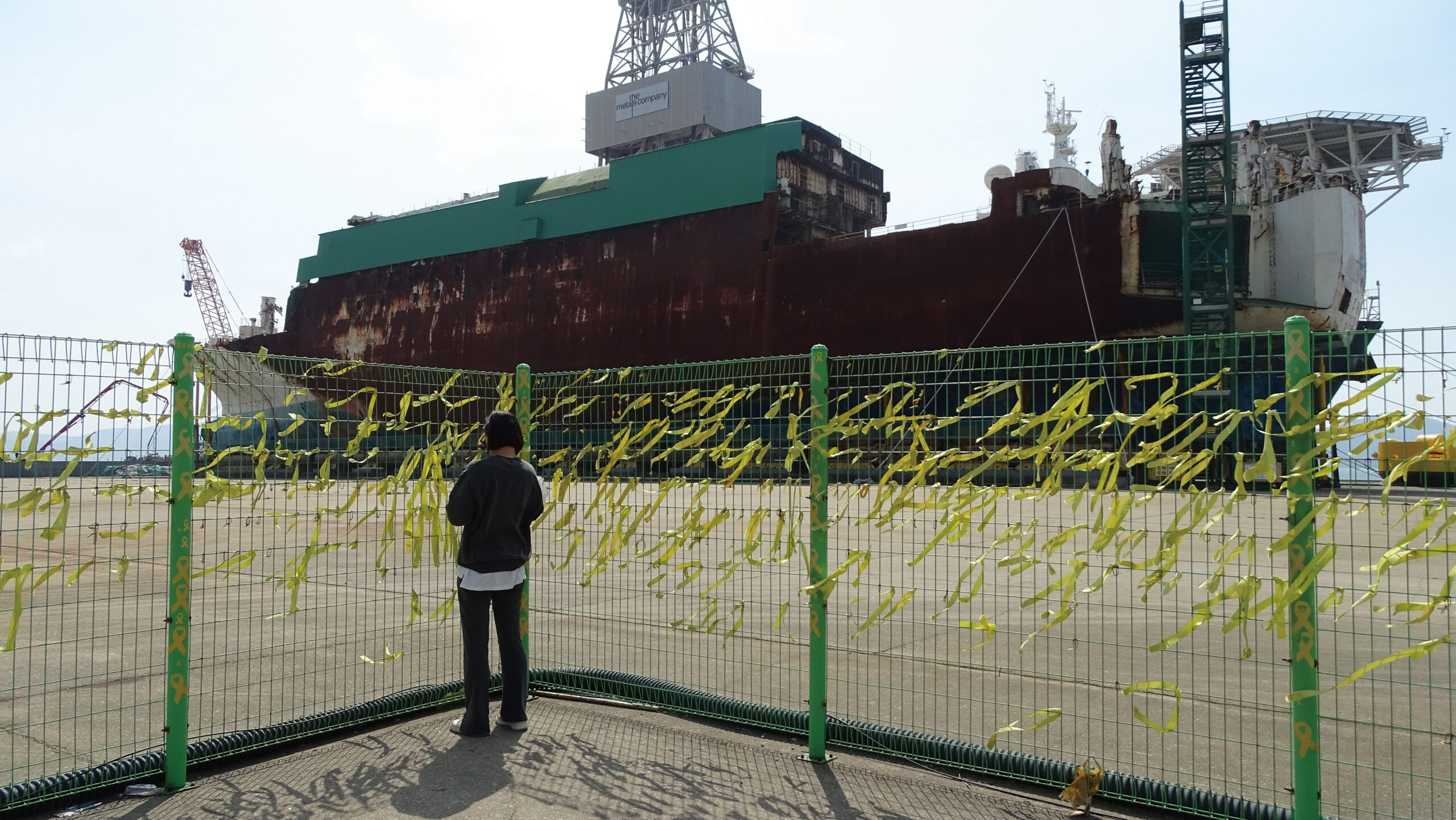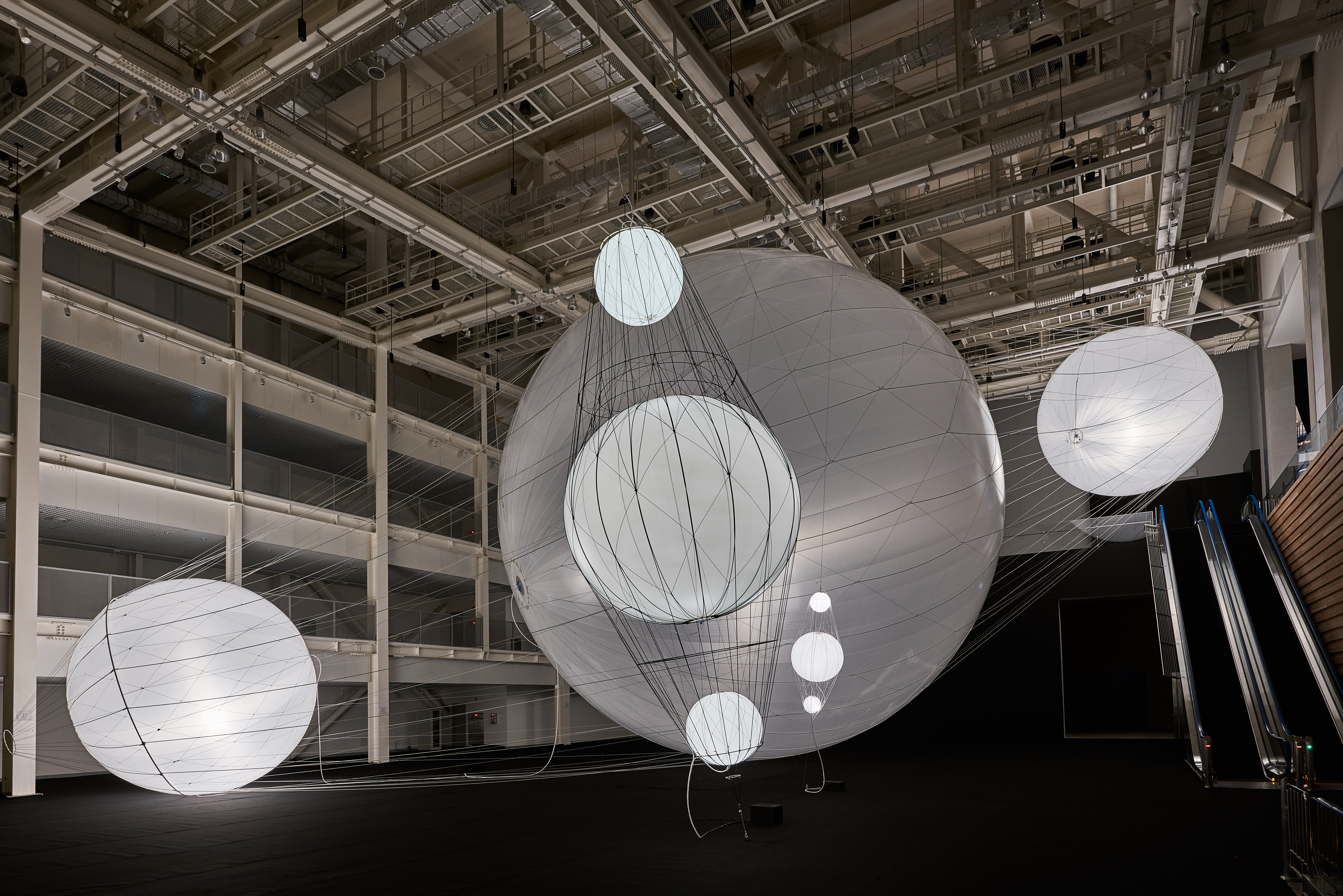A Juxtaposition of Moving Optimism
Written by W.I. Archie
Photograph courtesy of Asia Culture Center
The contemporary art installation of Tomas Saraceno at Gwangju’s Asia Culture Center was at times morbid and overwhelming. However, overall, it was a moving presentation of optimism. The name of this work is Our Inter-Planetary Bodies, and the exhibition began in June of last year and continued until the end of March. The show’s pieces were displayed in an almost pitch-dark studio the size of an airplane hangar. Time and space in this setting spoke in a language of drama. Indeed, the dialogue was hardly one of a casual, everyday meeting. In response, that structure, which is one’s sense of self, loses its footing somewhat.
The 45-year-old Saraceno was born in Argentina, where he completed a degree in architecture. After graduation, he traveled to Germany to pursue studies in art and made Berlin his home. Reading about his education provides an understanding of the artist’s involvement with the frontier that space represents. This Argentinean was already a notable artist in 2009, when he attended the International Space Studies Program at NASA Ames in Silicon Valley, California.
The first piece in the darkness worked as an allusion to Dali’s ants. It was difficult to miss the lethargy of civilization of which their force in the surrealist’s work spoke. The cursors announced as much as they flitted from one astral mass to another on Saraceno’s space map. The accompanying audio affirmed this. Rather than the zippy-zap of fully functioning arrows, one heard long, irregular beeps, each of which was more decrepit than the last. A three-dimensional spider web that was eerily lit by the flicking light of a black, vintage movie projector hung in front of the map, as if it were saying, “Crypt,” and beckoning one to reflect further on our failure as a species.

Deeper in the studio, inflated globes floated above, resembling hot air balloons. They appeared in small groups, with intricately designed nets to hold them in place. The smaller globes seemed to be in the orbit of the largest. Everything about these bodies spoke the very opposite of the earlier displays. One was moved by their apparent lightness as they swayed gently in mid-air. Their voluminous, but buoyant, mass evoked the sensuality of laden fruit. Their clean flesh tone and translucent exteriors conjured up the complexion of a healthy infant. In the same vein, one imagined the bulbs of spring vegetables and flowers. Their internal glow implied a sort of internal activity. One could be persuaded to see in these spheroids – as pristine human communities of the future – a metaphor for our bodies in space.
This installation by Saraceno appeared to be an idealized message of the approaching death of our civilization to become a revitalized and radiant existence beyond our planet. The naivety of this work, Our Inter-Planetary Bodies, is quaint. Nevertheless, due to the strength of the artist’s creative genius, it is provocatively uplifting.
The Author
The writer, W.I. Archie, is proudly from Toronto, Canada. The vibrancy of the city never ceases to amaze him. He feels indebted to Korea for having been able to teach English off and on here for many years. He is pursuing a graduate degree in the theory and practice of art at L’EHESS in Paris, France.








